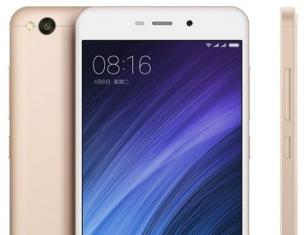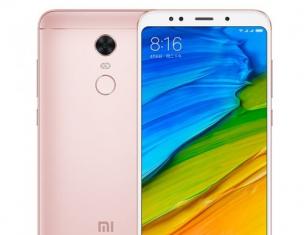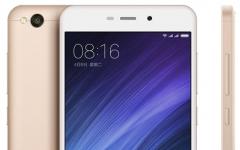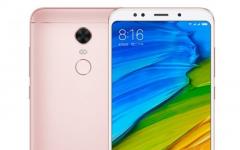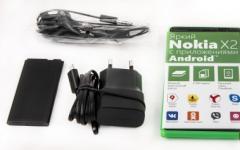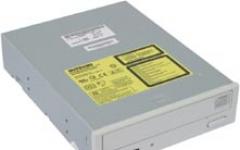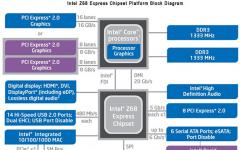Today, many users have accumulated several working and unused lithium batteries that appear when replacing mobile phones with smartphones.

When using batteries in phones with their own charger, due to the use of specialized microcircuits for charge control, there are practically no problems with charging. But when using lithium batteries in various homemade products, the question arises of how and with what to charge such batteries. Some believe that lithium batteries already contain built-in charge controllers, but in fact they have built-in protection circuits, such batteries are called protected. The protection circuits in them are mainly designed to protect against deep discharge and overvoltage when charging above 4.25V, i.e. This is an emergency protection, not a charge controller.
Some "home-made" on the site will immediately write that for little money you can order a special board from China, with which you can charge lithium batteries. But this is only for lovers of "shopping". It makes no sense to buy something that is easily assembled in a few minutes from cheap and common parts. Do not forget that the ordered board will have to wait about a month. And a purchased device does not bring such satisfaction as a do-it-yourself one.
The proposed charger is able to repeat almost everyone. This scheme is very primitive, but completely copes with its task. All that is required for high-quality charging of Li-Ion batteries is to stabilize the output voltage of the charger and limit the charge current.
The charger is distinguished by reliability, compactness and high stability of the output voltage, and, as you know, for lithium-ion batteries, this is a very important characteristic when charging.
Charger circuit for li-ion battery
The charger circuit is made on an adjustable voltage regulator TL431 and a medium power NPN bipolar transistor. The circuit allows you to limit the charging current of the battery and stabilizes the output voltage.

Transistor T1 acts as a regulating element. Resistor R2 limits the charge current, the value of which depends only on the parameters of the battery. It is recommended to use a 1W resistor. Other resistors may be 125 or 250 mW.
The choice of transistor is determined by the required charging current set to charge the battery. For the case under consideration, charging batteries from mobile phones, you can use domestic or imported medium power NPN transistors (for example, KT815, KT817, KT819). When the input voltage is high or low power transistor is used, it is necessary to install the transistor on the heatsink.
The LED1 LED (highlighted in red in the diagram) is used for visual signaling of the battery charge. When you turn on a discharged battery, the indicator glows brightly and dims as it charges. The indicator glow is proportional to the battery charge current. But it should be noted that when the LED is completely attenuated, the battery will still be charged with a current of less than 50mA, which requires periodic monitoring of the device to prevent overcharging.
To improve the accuracy of monitoring the end of the charge, an additional option for indicating the battery charge (highlighted in green) on the LED2 LED, low-power PNP transistor KT361 and current sensor R5 has been added to the charger circuit. It is possible to use any indicator option in the device, depending on the required accuracy of battery charge control.
The presented circuit is designed to charge only one Li-ion battery. But this charger can also be used to charge other types of batteries. It is only required to set the required value of the output voltage and the charging current.
Charger manufacturing
1. We purchase or select from available components for assembly in accordance with the diagram.
2. Assembling the circuit.
To check the performance of the circuit and its settings, we assemble the charger on the circuit board.

The diode in the battery power circuit (negative bus - blue wire) is designed to prevent the discharge of a lithium-ion battery in the absence of voltage at the input of the charger.
3. Setting the output voltage of the circuit.
We connect the circuit to a power source with a voltage of 5 ... 9 volts. By trimming resistance R3, we set the output voltage of the charger in the range of 4.18 - 4.20 volts (if necessary, at the end of the adjustment we measure its resistance and put a resistor with the desired resistance).
4. Setting the charging current of the circuit.
Having connected a discharged battery to the circuit (which will be reported by the switched on LED), with the resistor R2 we set the value of the charging current (100 ... 300 mA) according to the tester. If the resistance R2 is less than 3 ohms, the LED may not light up.
5. We are preparing a board for mounting and soldering parts.
We cut out the required size from the universal board, carefully process the edges of the board with a file, clean and tin the contact tracks.

6. Mounting a debugged circuit on a working board
We transfer the parts from the circuit board to the working one, solder the parts, perform the missing wiring of the connections with a thin mounting wire. Upon completion of the assembly, we thoroughly check the installation.

The charger can be assembled in any convenient way, including surface mounting. When installed without errors and serviceable parts, it starts working immediately after switching on.

When connected to a charger, a discharged battery begins to consume maximum current (limited by R2). When the battery voltage approaches the set value, the charge current will drop and when the battery voltage reaches 4.2 volts, the charging current will be almost zero.
However, leaving the battery connected to the charger for a long time is not recommended, as he does not like to overcharge even with a small current and may explode or catch fire.
If the device does not work, then it is necessary to check the control output (1) TL431 for voltage. Its value must be at least 2.5 V. This is the smallest acceptable reference voltage value for this microcircuit. The TL431 chip is quite common, especially in computer power supplies.
Progress is moving forward, and lithium batteries are increasingly replacing the traditionally used NiCd (nickel cadmium) and NiMh (nickel metal hydride) batteries.
With a comparable weight of one cell, lithium has a large capacity, in addition, the cell voltage is three times higher - 3.6 V per cell, instead of 1.2 V.
The cost of lithium batteries has begun to approach conventional alkaline batteries, the weight and size are much smaller, and besides, they can and should be charged. The manufacturer says 300-600 cycles can withstand.
There are different sizes and choosing the right one is not difficult.
The self-discharge is so low that they lie for years and remain charged, i.e. the device remains operational when it is needed.
"C" stands for Capacity
Often there is a designation of the form "xC". This is just a convenient notation for the charge or discharge current of a battery in fractions of its capacity. It is formed from the English word "Capacity" (capacity, capacity).When talking about charging with a current of 2C, or 0.1C, they usually mean that the current should be (2 × battery capacity) / h or (0.1 × battery capacity) / h, respectively.
For example, a battery with a capacity of 720 mAh, for which the charge current is 0.5C, must be charged with a current of 0.5 × 720mAh / h = 360 mA, this also applies to the discharge.
And you can make yourself a simple or not very simple charger, depending on your experience and capabilities.
Diagram of a simple charger on the LM317

Rice. 5.
The circuit with the application provides a fairly accurate voltage stabilization, which is set by the potentiometer R2.
Current stabilization is not as critical as voltage regulation, so it is enough to stabilize the current using a shunt resistor Rx and an NPN transistor (VT1).
The required charging current for a particular lithium-ion (Li-Ion) and lithium-polymer (Li-Pol) battery is selected by changing the resistance Rx.
The resistance Rx approximately corresponds to the following ratio: 0.95/Imax.
The value of the resistor Rx indicated in the diagram corresponds to a current of 200 mA, this is an approximate value, it also depends on the transistor.
It is necessary to provide a radiator depending on the charge current and input voltage.
The input voltage must be at least 3 volts higher than the battery voltage for normal operation of the stabilizer, which for one bank is? 7-9 V.
Diagram of a simple charger on the LTC4054

Rice. 6.
You can solder the LTC4054 charge controller from an old cell phone, for example, Samsung (C100, C110, X100, E700, E800, E820, P100, P510).

Rice. 7. This small 5-leg chip is labeled "LTH7" or "LTADY"
I will not go into the smallest details of working with the microcircuit, everything is in the datasheet. I will describe only the most necessary features.
Charge current up to 800 mA.
The optimal supply voltage is from 4.3 to 6 Volts.
Charge indication.
Output short circuit protection.
Overheating protection (reduction of charge current at temperatures above 120°).
Does not charge the battery when the voltage on it is below 2.9 V.
The charge current is set by a resistor between the fifth output of the microcircuit and ground according to the formula
I=1000/R,
where I is the charge current in amperes, R is the resistance of the resistor in ohms.
Lithium battery low indicator
Here is a simple circuit that lights up an LED when the battery is low and its residual voltage is close to critical.
Rice. eight.
Transistors are any low-power ones. The ignition voltage of the LED is selected by a divider of resistors R2 and R3. It is better to connect the circuit after the protection unit so that the LED does not drain the battery at all.
The nuance of durability
The manufacturer usually claims 300 cycles, but if you charge lithium just 0.1 volts less, up to 4.10 V, then the number of cycles increases to 600 or even more.Operation and Precautions
It is safe to say that lithium-polymer batteries are the most “gentle” batteries in existence, that is, they require mandatory compliance with a few simple but mandatory rules, due to non-observance of which troubles happen.1. Charge to a voltage exceeding 4.20 volts per can is not allowed.
2. Do not short circuit the battery.
3. It is not allowed to discharge with currents exceeding the load capacity or heating the battery above 60 ° C. 4. A discharge below a voltage of 3.00 Volts per jar is harmful.
5. Battery heating above 60°C is harmful. 6. Battery depressurization is harmful.
7. Harmful storage in a discharged state.
Failure to comply with the first three points leads to a fire, the rest - to a complete or partial loss of capacity.
From the practice of many years of use, I can say that the capacity of the batteries changes little, but the internal resistance increases and the battery starts to work less in time at high consumption currents - it seems that the capacity has fallen.
Therefore, I usually put a larger capacity, which the dimensions of the device allow, and even old cans, which are ten years old, work pretty well.
For not very high currents, old cell batteries are suitable.

You can pull out a lot of perfectly working 18650 batteries from an old laptop battery.
Where do I use lithium batteries
I have long converted a screwdriver and an electric screwdriver to lithium. I use these tools on a regular basis. Now even after a year of non-use, they work without recharging!I put small batteries in children's toys, watches, etc., where there were 2-3 "tablet" elements from the factory. Where exactly 3V is needed, I add one diode in series and it turns out just right.
I put in LED flashlights.
Instead of the expensive and low-capacity Krona 9V, I installed 2 cans in the tester and forgot all the problems and extra costs.
In general, I put it wherever it turns out, instead of batteries.
Where do I buy lithium and usefulness on the topic
Are on sale. At the same link you will find charging modules and other useful things for DIYers.At the expense of capacity, the Chinese usually lie and it is less than written.

Honest Sanyo 18650
Lithium-ion batteries are not picky, but they need to be properly cared for to work properly. A few simple rules will help to significantly increase battery life. Let's determine how to properly charge Li-Ion batteries so that they work for a long time.
A few simple rules for your battery
The lithium-ion battery should be used as follows:
- carry out a complete discharge every three months
- the rest of the time do not completely discharge
- store partially charged
- avoid overheating
Now about everything in order
This type of battery does not have a memory effect, so the owner can charge them without waiting for full discharge. Typically, the manufacturer calculates the service life by the number of discharge cycles. A quality battery can easily withstand 500-600 times. If you start charging the battery in a timely manner - more precisely, when its charge indicator drops to 10-15 percent, then its battery life will approximately double.
But there is an important fact - sometimes it is useful to discharge the battery completely. A full charge during the entire period of operation can also cause harm.

Experts advise once a quarter to completely discharge the battery, and then charge it to the maximum and keep it connected to the network for ten hours.
Why are batteries kept charged?
If you are going to store the battery, then the best state for it will be a charge level of 50 percent. Positive temperature is required, preferably about 20 degrees. If you leave the battery on the shelf for a long time, its capacity will gradually begin to decrease. If you put aside a completely discharged battery for a long time, then this situation is even worse, there is a high probability that then the device with it will not even start.
How long do batteries hold a charge?
Batteries are discharged very slowly, 5-7 percent of the charge is spent per month. Manufacturers recommend using only original chargers. Use only high-quality things, buying Chinese fake ones can negatively affect the battery condition.

Features of proper charging
In order for the battery to last longer, you should not start charging it immediately after coming out of the cold. High temperature is also a dangerous enemy of such devices, they are not able to endure overheating. This is detrimental to their condition and dangerous to your health, it is not uncommon for a battery that has warmed up under the influence of work and sunlight to catch fire. The Samsung Galaxy Note 7 is the most striking example of such a device, and a battery defect has led to a recall and replacement of a larger batch of smartphones. Try to operate the battery correctly, so you can significantly extend its life.
At this time, li ion batteries and Li-pol (lithium polymer) batteries are widespread.
The difference between them is in the electrolyte. In the first version, helium is used as it, in the second, a polymer saturated with a solution containing lithium. Today, due to the popularity of cars with electric motors, the question of finding the ideal type of li ion battery that is optimal for such a vehicle is acute.
It consists, like other batteries, of an anode (porous carbon) and a cathode (lithium), a separator separating them and an electrolyte conductor. The discharge process is accompanied by the transition of "anode" ions to the cathode through the separator and electrolyte. Their direction is reversed during charging (picture below).

Ions circulate in the process of discharging and charging the cell between oppositely charged electrodes.
Ion batteries have a cathode made of different metals, which is their main difference. Manufacturers, using different materials for electrodes, improve the characteristics of batteries.
But, it happens that the improvement of some characteristics leads to a sharp deterioration in others. For example, by optimizing the capacity needed to increase travel time, you can increase power, safety, and reduce your environmental impact. At the same time, you can reduce the load current, increase the cost or size of the battery.
You can get acquainted with the main parameters of different types of lithium batteries (lithium-manganese, lithium-cobalt, lithium-phosphate and nickel-manganese-cobalt) in the table:

Rules for users of electric transport
The capacity of such batteries practically does not decrease during long-term storage. Li-ion batteries are discharged by only 23% if stored at a temperature of 60 degrees for 15 years. It is due to these properties that they are widely used in electric transport technologies.
Lithium-ion batteries are suitable for electric vehicles, which have a complete control system built into the case.
For this reason, users during operation forget about the basic rules that can extend their service life:
- the battery must be fully charged immediately after purchase in the store, since the electrodes are charged by 50% during the production process. Therefore, the available capacity will decrease, i.e. operating time if there is no initial charge;
- the battery must not be allowed to completely discharge in order to save its resource;
- it is necessary to charge the battery after each departure, even if the charge is still left;
- Do not heat batteries as high temperatures contribute to the aging process. In order to use the resource as much as possible, it is necessary to operate at the optimum temperature, which is 20-25 degrees. Therefore, the battery cannot be stored near a heat source;
- in cold weather, it is recommended to wrap the battery in a plastic bag with a vacuum lock to store at 3-4 degrees, i.e. in an unheated room. The charge should be at least 50% of the full;
- after the battery has been operated at low temperatures, it cannot be charged without holding it for some time at room temperature, i.e. it needs to be warmed up;
- You need to charge the battery with the charger supplied with the kit.
The PU of these batteries has several subspecies - lithium - LiFePO4 (iron - phosphate), using an iron phosphate cathode. Their characteristics allow us to talk about batteries as the pinnacle of technology used for the production of batteries.
Their main advantages are:
- the number of charge-discharge cycles, which reaches 5000 until the moment when the capacity decreases by 20%;
- long service life;
- missing "memory effect";
- wide temperature range with unchanged performance (300-700 degrees Celsius);
- chemical stability and thermal, which increase safety.
The most widely used batteries
Among the many, the most common are 18650 li ion batteries manufactured by five companies: LG, Sony, Panasonic, Samsung, Sanyo, whose factories are located in Japan, China, Malaysia and South Korea. It was planned that li ion 18650 batteries would be used in laptops. However, due to the successful format, they are used in radio-controlled models, electric vehicles, lanterns, etc.
Like any quality product, such batteries have many fakes, therefore, in order to extend the life of the device, you only need to purchase batteries from well-known brands.
Protected and unprotected lithium-ion batteries
It is also important for lithium batteries whether they are protected or not. The operating range of the former is 4.2-2.5V (used in devices designed to work with lithium-ion sources): LED lights, low-power household appliances, etc.
In power tools, bicycles with electric motors, laptops, video and photo equipment, unprotected batteries are used, controlled by the controller.

What you need to know about lithium-ion batteries?
First of all, the restrictions that must be observed during operation:
- recharging voltage (maximum) cannot be higher than 4.35V;
- its minimum value cannot be lower than 2.3 V;
- the discharge current should not exceed more than twice the capacitance value. If the value of the latter is 2200 mAh, the maximum current is 4400 mA.
Functions performed by the controller
Why do you need a li ion battery charge controller? It performs several functions:
- supplies a current that compensates for self-discharge. Its value is less than the maximum charge current, but more than the self-discharge current;
- implements an efficient charge / discharge cycle algorithm for a specific battery;
- compensates for the difference in energy flows while charging and providing energy to the consumer. For example, when charging and powering a laptop;
- measures the temperature during overheating or hypothermia, preventing damage to the battery.

A li ion battery charge controller is made either in the form of a microcircuit built into the battery, or as a separate device.
To charge the batteries, it is better to use the standard charger for 18650 li ion batteries supplied in the kit. The charger for 18650 lithium batteries usually has a charge level indication. More often it is an LED that shows when the charge is in progress and its end.
On more advanced devices, you can track the time remaining until the end of the charge, the current voltage on the display. For a 18650 battery with a capacity of 2200mA, the charging time is 2 hours.

But, it is important to know how to charge a li ion 18650 battery with what current. It should be half the nominal capacity, i.e., if it is 2000 mAh, then the optimal current is 1A. By charging the battery with a high current, its degradation quickly sets in. When using low current, it will take more time.
Video: How to charge a Li ion battery charger with your own hands
Scheme of a device for charging batteries
It looks like this:

The circuit is distinguished by reliability and repeatability, and the incoming parts are inexpensive and readily available. In order to increase the battery life, competent charging of li ion batteries is required: by the end of charging, the voltage should decrease.
After its completion, i.e. when the current reaches zero, the charging of the li ion battery should stop. The circuit above satisfies these requirements: a discharged battery connected to the charger (VD3 lights up) uses a current of 300mA.
The ongoing process is indicated by the burning LED VD1. The current gradually decreasing to 30 mA indicates that the battery is charging. The end of the process is signaled by the lit LED VD2.

The circuit uses an LM358N operational amplifier (you can replace it with an analog KR1040UD1 or KR574UD2, which has a different pin arrangement), as well as a VT1 S8550 transistor 9 yellow, red and green LEDs (1.5V).
Can the battery be revived?
After a couple of years of active use, batteries catastrophically lose capacity, creating problems when using your favorite device. Is it possible and how to restore a li ion battery while the user is looking for a replacement?

Recovery of a li ion battery is possible temporarily in several ways.
If the battery is swollen, ie. stopped holding a charge, which means that gases have accumulated inside.
Then proceed as follows:
- the battery case is carefully disconnected from the sensor;
- separating the electronic sensor;
- find a cap with control electronics under it and pierce it carefully with a needle;
- then, they find a heavy flat object, larger in area than the area of \u200b\u200bthe battery, which will be used as a press (do not use a vice and similar devices);
- put the battery on a horizontal plane, and press down with a press, remembering that the battery can be damaged by applying excessive force. If it is not enough, the result may not be achieved. This is the most crucial moment;
- it remains to drip epoxy onto the hole and solder the sensor.
There are other ways, which you can read about on the Internet.

You can choose a charger on the site http://18650.in.ua/chargers/.
Video: Li-ion batteries, tips for using li-ion batteries
Brought a couple of weeks ago 6 Makitov devices for repair.
4 screwdrivers, 1 jigsaw and 1 grinder.
Whole box. Heavy.
They gave me a quote for the repair. It turned out that only one screwdriver made economic sense to restore. The rest went to parts.
In general, the time has come to replace the fleet of hand-held cordless tools.
So I immediately bought new screwdrivers with Li-ion batteries for all carpenters.
Problem right away.
Guys are used to Ni-cd batteries, and Li-ion requires a completely different approach. Right to the opposite.
And, of course, it's not just about how to charge a Li-ion screwdriver battery. If it is not properly discharged and / or stored, there will also be little good for it.
Therefore, I looked at a couple of dozen sites and a couple of hours of video.
I threw out all the husks and made the most “dry” pomace without “water”.
How to charge a Li-ion screwdriver battery and other important rules for its operation
- Remember -Li— ion are opposite toNi— CD !
- Put Li-ion on charge already with a residual charge 20-50% .
- Important! Do not allow Li-ion discharge below 10-20% . This is a critical value. The smaller the discharge, the longer Li-ion will work -
- Li-ion works optimally in the range from -10 to +45°C. Charge at temperatures from +10 to +30°C.
- Once every 4 months, carry out a full discharge-charge cycle to calibrate the charge level sensor in battery controllers. That is, discharge to almost 100% and charge for 12 hours.
- Keep Li-ion on a charge 40-60%
.
It is impossible to store Li-ion charged at 100%, since in this case it will permanently lose 20% of its capacity in 3 months.
With proper storage - with a charge of 40-60% - Li-ion will irretrievably lose only 1% of its capacity in the same 3 months. - If the screwdriver is equipped with two Li-ions, then charge one up to 40-60% and store it as a backup. Once a month, use it as a worker - charge up to 100%, discharge up to 40-60% and store it again.
The second Li-ion is the main worker. Have worked - at the end of each day, put it on recharging, even if it is discharged by less than 10%.
Use a backup Li-ion if the main working Li-ion is discharged as a result of intensive work and there is no time to wait for it to be charged.
That's all. Now you know how to charge a Li-ion battery for a screwdriver.
I handed one to every carpenter, and even hung it on the bulletin board in the workshop.
And here's another question - why did I switch from Ni-cd to Li-ion cordless screwdrivers?
Here are the advantages of Li-ion batteries over Ni-cd:
- at least 2 times higher specific capacity;
- self-discharge is several times less;
- no memory effect, which makes it possible to recharge at any time;
- withstands on average twice as many “charge-discharge” cycles, that is, it will live twice as long.
Are there any disadvantages?
I don't know those.
They write that:
- Li-ion are subject to aging.
Well, are Ni-cds eternal or what? They also get old. - Li-ion has low stability when operating at low temperatures.
All this is in the past. Now Li-ion is made such that they work even at -10 ° C a hundred pounds. And some sources indicate that I can work even at -30 ° C; - Li-ion batteries require the use of the original charger only.
Well, what's wrong with that? All screwdrivers are sold just with their original charger included. - Li-ion has a high cost.
Yes, I wouldn't say so. I recently went to the store. Ni-cd batteries below 1 tr. did not see. And on AliExpress you can buy a whole screwdriver with Li-ion for 3 tr.
And finally, if you work with a screwdriver professionally - do not hesitate too much - it will crumble at the same time as the Li-ion battery. So you probably won't have to buy a separate Li-ion battery.
Just with reasonable non-vandal use, a screwdriver should be enough for a couple of years.
And, yes, another important rule. Do not save on the power of a screwdriver. It corresponds to the battery voltage. Take with a Li-ion battery of 20 volts minimum. It will spin like a beast.
And buy a weak one - there will be little sense from it, and there will be no joy from penny savings either.
I generally scored screwdrivers with Li-ion batteries at 25 volts. Joiners do not rejoice. Especially after Ni-cd at 14 volts.
Look like that's it. If you have any questions, disagree with something - write in the comments.
P.S. Would you like to be notified of new articles on this blog? Click on this button:
P.S.S. After reading the article, do you have any questions, comments, objections? Write them in the comments below. I'll try to answer everything.


